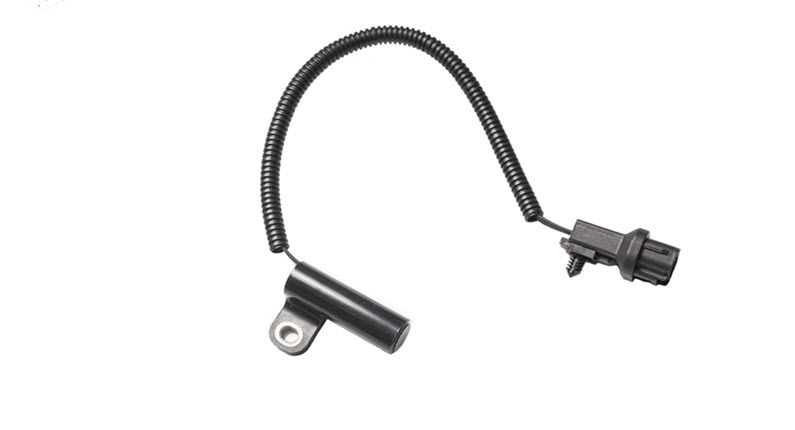The crankshaft position sensor (CKP) is an important piece of equipment. The sensor measures your vehicle’s rotation speed as well as the exact position that the engine crankshaft is in. Your engine needs a working crankshaft position sensor in order to start and run properly.
In some vehicles, you can find the crankshaft position sensor positioned right next to the main pulley (also called a harmonic balancer). In other vehicles, the sensor could be situated right at the transmission bell housing, or in the engine cylinder block.
Your Mercedes Crankshaft Position Sensor
The crankshaft position sensor is installed so that the reluctor ring’s teeth touch the crankshaft pass very close to the tip of the sensor. The reluctor ring is missing the required amount of teeth to send information regarding the reference point of the crankshaft to the engine computer.
While the crankshaft is rotating, the sensor creates a pulsed voltage signal. Each pulse matches a tooth (or missing tooth slot) on the reluctor ring.
The crankshaft position sensor lets the PCM know when to produce a spark and in which of the cylinders to produce it. The sensor also monitors any misfiring cylinders. If the sensor does not get a signal, then there will be no spark and the engine will not start.
There are 2 primary types of sensors. The first sensor is magnetic and contains a pick-up coil that produces A/C voltage and the second type uses Hall-effect sensors that then produce a digital square wave signal. Most modern vehicles use the second type of sensor.
Symptoms of a Failing Crankshaft Position Sensor
- Issues Starting: One of the most common issues that can be caused by a crankshaft position sensor that is failing is a vehicle that doesn’t want to start. The sensor closely monitors the speed and position of the crankshaft. If the sensor is experiencing difficulties then the engine may have occasional starting problems or may not start at all.
- Intermittent Stalling: Intermittent stalling is another symptom that is commonly associated with a faulty crankshaft position sensor. In the event that the sensor or the wires connecting to the sensor are having issues, the crankshaft signal could be cut off while the engine is running, causing the engine to stall. In most similar situations, the problem is usually an issue related to the wiring although a faulty signal can cause the same problem.
- Check-Engine Light: Another symptom you may notice with a faulty CKP is an illuminated Check Engine Light. Hopefully if your car’s computer system notices an issue it will light up on your dashboard. Of course, a Check Engine Light can mean a multitude of issues so the only way to be sure is to have the computer scanned for trouble codes. Most auto parts stores will carry the device needed to scan as well as the knowledge to tell you what the code means.
- Uneven Acceleration: Without the proper information coming from the sensor, the engine control unit would make no or incorrect adjustments to spark timing and fuel injection as your vehicle increases its speed. You might experience slow or uneven acceleration with the lack of accuracy and have a difficult time maintaining a constant speed.
- Misfires: A bad crankshaft position sensor can cause cylinders to misfire which you might hear or feel as a stutter in the engine. The reason for this could be that a failing sensor might not be sending accurate information that controls how the pistons are positioned. You could actually get the same result if the spark plug timing is faulty, so it’s best to have a mechanic take a look at your spark plugs
Motor Cars International for Crankshaft Position Sensor Failure
If your Mercedes is exhibiting any of the above  symptoms and you suspect it could have a crankshaft position issue, you should get it into a reputable shop right away for inspection and repair. If you live in the Easton, Norton, Raynham, Sharon, or Bridgewater, MA area, contact Motor Cars International for speedy service you can trust.
symptoms and you suspect it could have a crankshaft position issue, you should get it into a reputable shop right away for inspection and repair. If you live in the Easton, Norton, Raynham, Sharon, or Bridgewater, MA area, contact Motor Cars International for speedy service you can trust.

